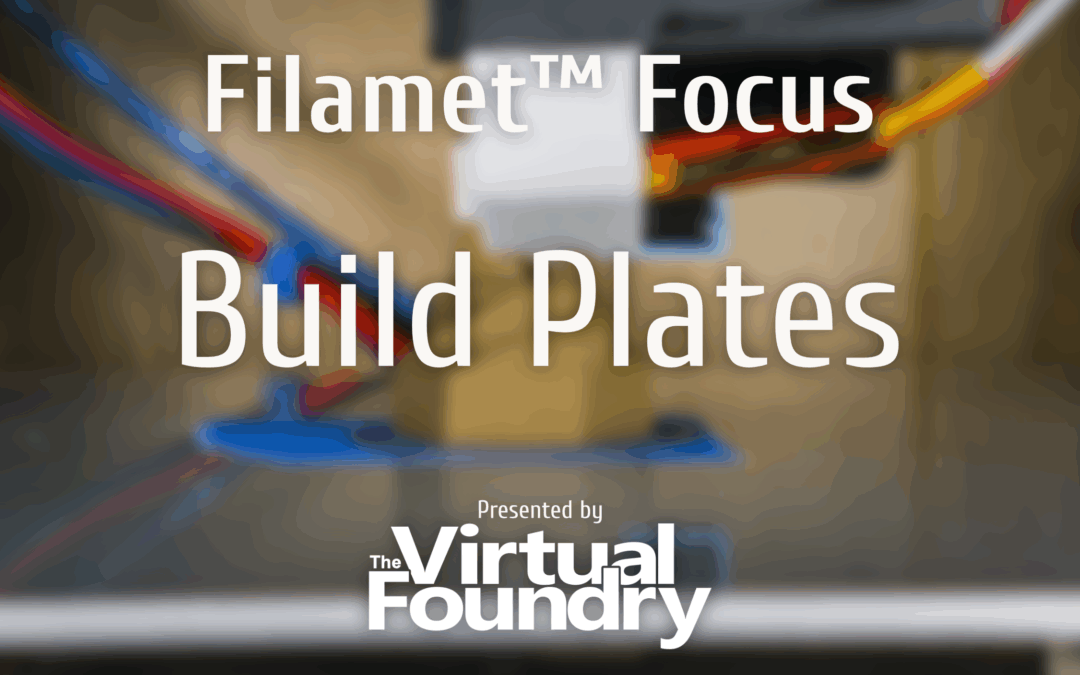In this episode of Filamet Focus, we dive into build plates for printing with Filamet™. Learn which surfaces work...


May 12, 2025 | Filamet Focus, Podcast
In this episode of Filamet Focus, we dive into build plates for printing with Filamet™. Learn which surfaces work...

Apr 21, 2025 | Filamet Focus, Podcast
Welcome to Filamet™ Focus, the podcast dedicated to answering your questions about The Virtual Foundry’s metal 3D...

Feb 21, 2023 | Blog, Podcast, Press Releases
The Virtual Foundry and University of Pécs sign Collaboration MOU Stoughton, Wisconsin and Pécs, Hungary: The Virtual...
foundry
foundry podcast, the foundry podcast, 3d printing podcast, 3d podcast, podcast 3d printing
Metal 3D printing offers numerous advantages over traditional manufacturing methods, including reduced material waste, complex geometries, and faster prototyping. These benefits make it an attractive option for industries looking to innovate and streamline production processes.
For instance, companies can create intricate designs that would be impossible to achieve with conventional machining. Additionally, metal 3D printing enables on-demand production, which can significantly lower inventory costs and lead times, ultimately enhancing operational efficiency.
The metal 3D printing industry is rapidly evolving, with advancements in technology driving new applications and capabilities. Emerging trends include the integration of artificial intelligence for process optimization and the development of new metal alloys specifically designed for additive manufacturing.
As these technologies mature, we can expect to see broader adoption across various sectors, including aerospace, automotive, and healthcare. Innovations such as multi-material printing and improved post-processing techniques will further expand the possibilities of metal 3D printing.
Numerous companies have successfully integrated Filamet™ into their production processes, showcasing its versatility and effectiveness. These case studies highlight how businesses have leveraged metal 3D printing to solve specific challenges and achieve significant cost savings.
For example, a leading aerospace manufacturer utilized Filamet™ to produce lightweight, complex components, resulting in a 30% reduction in weight while maintaining structural integrity. Such success stories illustrate the practical applications of Filamet™ in real-world scenarios.
For those new to metal 3D printing, understanding the basics is essential to effectively utilize this technology. Starting with the right equipment, materials, and design considerations can significantly impact the success of your projects.
Begin by selecting appropriate 3D printers compatible with Filamet™ and familiarize yourself with the design software used to create models. Additionally, exploring online resources and community forums can provide valuable insights and support as you embark on your metal 3D printing journey.
foundry
foundry podcast, the foundry podcast, 3d printing podcast, 3d podcast, podcast 3d printing
Metal 3D printing offers numerous advantages over traditional manufacturing methods, including reduced material waste, complex geometries, and faster prototyping. These benefits make it an attractive option for industries looking to innovate and streamline production processes.
For instance, companies can create intricate designs that would be impossible to achieve with conventional machining. Additionally, metal 3D printing enables on-demand production, which can significantly lower inventory costs and lead times, ultimately enhancing operational efficiency.
The metal 3D printing industry is rapidly evolving, with advancements in technology driving new applications and capabilities. Emerging trends include the integration of artificial intelligence for process optimization and the development of new metal alloys specifically designed for additive manufacturing.
As these technologies mature, we can expect to see broader adoption across various sectors, including aerospace, automotive, and healthcare. Innovations such as multi-material printing and improved post-processing techniques will further expand the possibilities of metal 3D printing.
Numerous companies have successfully integrated Filamet™ into their production processes, showcasing its versatility and effectiveness. These case studies highlight how businesses have leveraged metal 3D printing to solve specific challenges and achieve significant cost savings.
For example, a leading aerospace manufacturer utilized Filamet™ to produce lightweight, complex components, resulting in a 30% reduction in weight while maintaining structural integrity. Such success stories illustrate the practical applications of Filamet™ in real-world scenarios.
For those new to metal 3D printing, understanding the basics is essential to effectively utilize this technology. Starting with the right equipment, materials, and design considerations can significantly impact the success of your projects.
Begin by selecting appropriate 3D printers compatible with Filamet™ and familiarize yourself with the design software used to create models. Additionally, exploring online resources and community forums can provide valuable insights and support as you embark on your metal 3D printing journey.